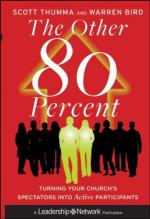R. [9]
[Footnote 1: The character of Sir Roger de Coverley is said to have been drawn from Sir John Pakington, of Worcestershire, a Tory, whose name, family, and politics are represented by a statesman of the present time. The name, on this its first appearance in the ‘Spectator’, is spelt Coverly; also in the first reprint.]
[Footnote 2: ‘Soho Square’ was then a new and most fashionable part of the town. It was built in 1681. The Duke of Monmouth lived in the centre house, facing the statue. Originally the square was called King Square. Pennant mentions, on Pegg’s authority, a tradition that, on the death of Monmouth, his admirers changed the name to Soho, the word of the day at the field of Sedgemoor. But the ground upon which the Square stands was called Soho as early as the year 1632. ‘So ho’ was the old call in hunting when a hare was found.]
[Footnote 3: John Wilmot, Earl of Rochester, b. 1648, d. 1680. His licentious wit made him a favourite of Charles II. His strength was exhausted by licentious living at the age of one and thirty. His chief work is a poem upon ‘Nothing.’ He died repentant of his wasted life, in which, as he told Burnet, he had ’for five years been continually drunk,’ or so much affected by frequent drunkenness as in no instance to be master of himself.]
[Footnote 4: Sir George Etherege, b. 1636, d. 1694. ‘Gentle George’ and ‘Easy Etherege,’ a wit and friend of the wits of the Restoration. He bought his knighthood to enable him to marry a rich widow who required a title, and died of a broken neck, by tumbling down-stairs when he was drunk and lighting guests to their apartments. His three comedies, ’The Comical Revenge,’ ‘She Would if she Could,’ and ’The Man of Mode, or Sir Fopling Flutter,’ excellent embodiments of the court humour of his time, were collected and printed in 8vo in 1704, and reprinted, with addition of five poems, in 1715.]
[Footnote 5: Bully Dawson, a swaggering sharper of Whitefriars, is said to have been sketched by Shadwell in the Captain Hackum of his comedy called ‘The Squire of Alsatia.’]
[Footnote 6: The ‘Rose’ Tavern was on the east side of Brydges Street, near Drury Lane Theatre, much favoured by the looser sort of play-goers. Garrick, when he enlarged the Theatre, made the ‘Rose’ Tavern a part of it.]
[Footnote 7: Captain Sentry was by some supposed to have been drawn from Colonel Kempenfelt, the father of the Admiral who went down with the ’Royal George’.]
[Footnote 8: Will. Honeycomb was by some found in a Colonel Cleland.]
[Footnote 9: Steele’s signature was R till No. 91; then T, and occasionally R, till No. 134; then always T.
Addison signed C till No. 85, when he first used L; and was L or C till No. 265, then L, till he first used I in No. 372. Once or twice using L, he was I till No. 405, which he signed O, and by this letter he held, except for a return to C (with a single use of O), from 433 to 477.]




